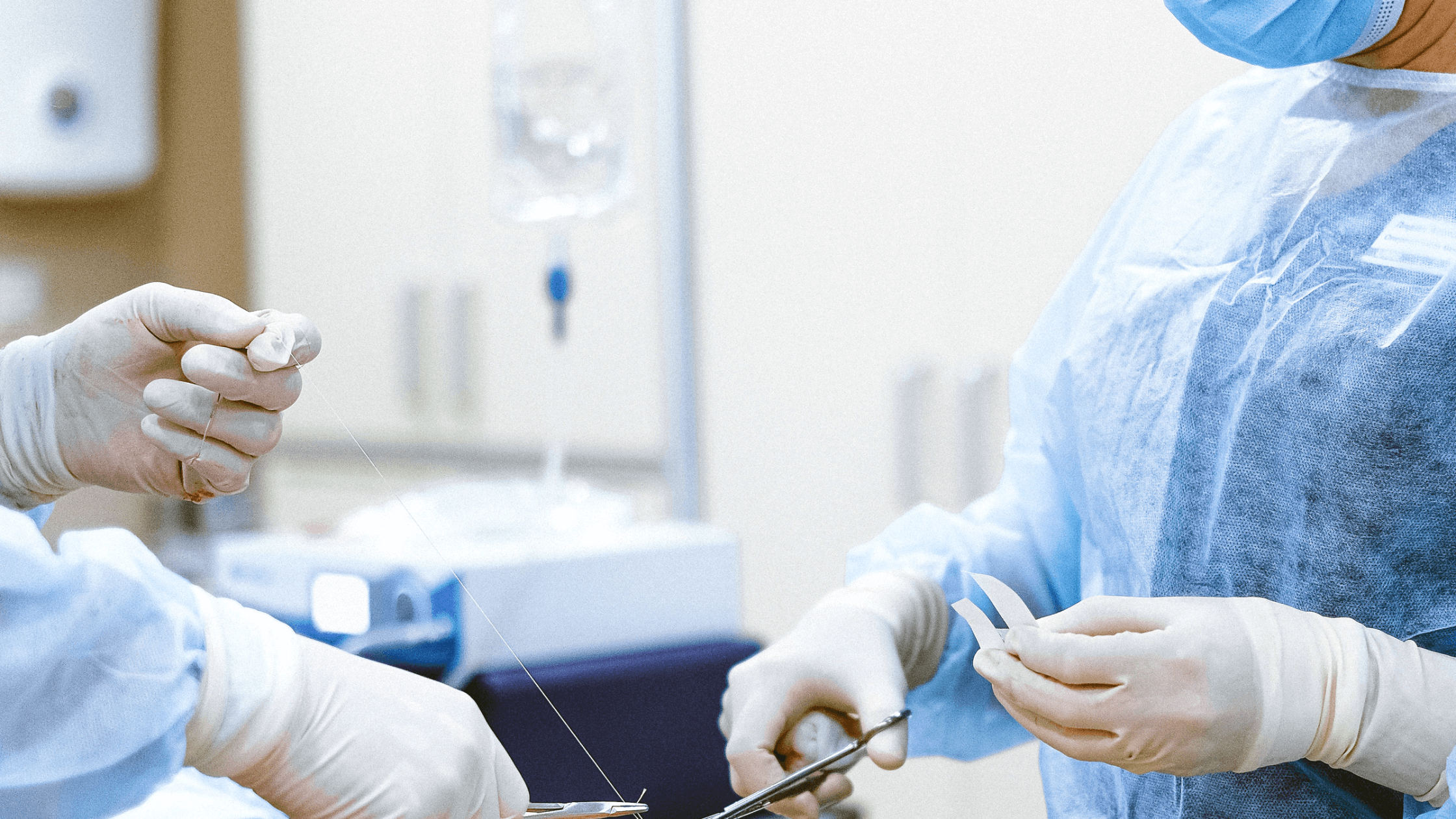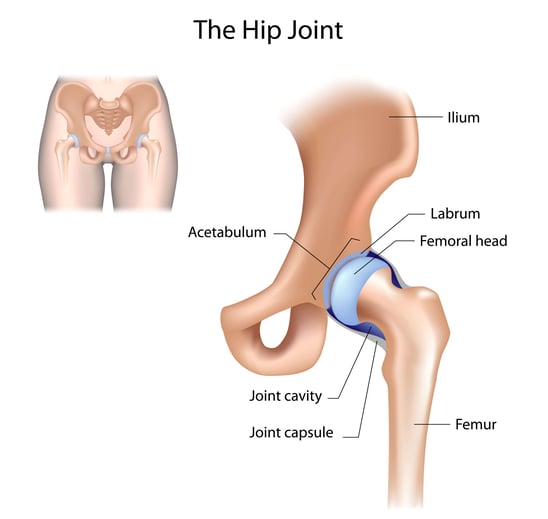Hip Labrum Repair: Grades of Injury and How Physical Therapy Can Help

Licensed Physical Therapist, PT, MSPT // Certified Dry Needling Specialist / Clinical Director of EW Motion Therapy Hoover
The hip joint is a complex joint that plays a crucial role in daily activities, such as walking, running, and jumping. The hip joint comprises the femur (thigh bone) and the acetabulum (hip socket), which are held together by strong ligaments and muscles. Additionally, the hip joint has a specialized cartilage called the labrum, which plays a vital role in hip joint stability and function. A tear in your labrum of any severity can cause pain and may cause you to miss out on some of your favorite activities.
While conservative treatment options can help less severe tears in the labrum, some higher-grade tears require surgical repair. After surgery, physical therapy is an essential component of the recovery process. Physical therapy can help improve the hip's range of motion, strength, and stability, reducing re-injury risk. Physical therapists will work with patients to develop an individualized rehabilitation plan that includes exercises and stretches to promote healing and improve hip function. We do this daily for our clients at EW Motion Therapy, and many have a high success rate. Even if you decide our services do not fit your needs, you can still read on to learn:
- What the labrum is
- How you can tear your labrum
- Different grades of injury
- How physical therapy can help you avoid/postpone surgery
- What the surgical process looks like
- How physical therapy can help you prepare for/recover from surgery
- Realistic recovery timelines
What is the labrum?
The labrum is a fibrocartilage structure that encircles the acetabulum, deepening the socket and providing additional stability to the hip joint. The labrum also acts as a shock absorber, reducing the stress on the hip joint during movements and acting as a protective rim around the socket. Despite its essential function, the labrum is vulnerable to injury and can tear, leading to hip pain, discomfort, and limited mobility.

How can you tear your labrum?
Symptoms of a labral tear can include pain in the front of your hip, groin, or buttocks while doing certain activities, like sitting, doing deep squats, or running. You may also have some stiffness or reduced range of motion and some joint popping, clicking, or locking.
The labrum in the hip joint can tear for various reasons, including:
- Traumatic injury: A direct blow or impact to the hip joint, such as a fall or sports-related injury, can cause a labral tear.
- Repetitive motion: Activities that involve repetitive hip motions, such as running, twisting, or pivoting, can cause wear and tear on the labrum over time, leading to a tear. In young athletes, especially, collision sports like football and sports with an extended range of motion like gymnastics are more likely to cause labral tears.
- Femoroacetabular impingement (FAI): FAI is a condition where abnormal contact between the femoral head and the acetabulum leads to labral tears and cartilage damage.
- Hip dysplasia: Hip dysplasia is a condition where the hip socket is shallow or misshapen, causing abnormal contact between the femur and the acetabulum, leading to labral tears and cartilage damage.
- Aging: As we age, the labrum can become weaker and more susceptible to injury. As you age, you can also experience symptoms from arthritis, bone spurs, or compression due to posture.
It is important to note that not all labral tears cause symptoms, and some may not require treatment. However, if you experience persistent hip pain or discomfort, it is essential to seek medical attention to determine the cause and develop an appropriate treatment plan.
What are the different grades of injury?
Labrum injuries are classified into different grades depending on the severity of the tear. Your doctor may use different terms for these grades, but they generally point to the same severity level across the board. These grades include:
Grade I: A minor tear in the labrum's outer edge that does not extend into the cartilage.
Grade II: A more significant tear extending more profoundly into the labrum but not reaching the cartilage.
Grade III: A complete tear extending through the entire labrum, but the cartilage remains intact.
Grade IV: A complete tear that extends through the labrum and cartilage, exposing the underlying bone.
Tears are typically diagnosed with a physical exam, then an X-ray to examine the joint structure, and an MRI to gauge the severity of the labral tear.
How can physical therapy help you avoid/postpone surgery?
Physical therapy can be an effective non-surgical treatment option for labral tears in the hip. The primary goal of physical therapy for hip labral tears is to reduce pain, improve function, and prevent the need for surgery. Here are some ways physical therapy can help you avoid surgery:
- Pain management: Physical therapy can help alleviate pain and discomfort in the hip joint through various techniques, including manual therapy, soft tissue mobilization, and modalities such as ice, heat, or electrical stimulation.
- Strengthening and stabilization: Physical therapy can help improve the strength and stability of the hip joint through specific exercises that target the muscles around the hip joint, including the glutes, hip flexors, and quadriceps. Strengthening these muscles can help support the hip joint, reducing the strain on the labrum and improving overall hip function.
- Range of motion: Physical therapy can help improve hip joint flexibility and range of motion through stretching and range of motion exercises. Improving hip joint mobility can help reduce pain and prevent further injury.
- Activity modification: Physical therapists can help patients modify their activities or sports to reduce the risk of further labral tears. They can advise on proper technique, footwear, and equipment to ensure safe sports or other physical activity participation.
In some cases, physical therapy may not completely heal a labral tear, and surgery may be necessary. However, physical therapy can often delay or prevent the need for surgery in less severe tears.
What does the surgical process look like?
In cases where conservative treatments, such as physical therapy and medication, do not alleviate the symptoms, surgery may be necessary to repair the torn labrum. The procedure is arthroscopic, meaning the surgeon will use small incisions to go into the joint and clear away excess tissue, then use an anchor or stitches to reassemble the labrum. The surgery is performed under general anesthesia and is usually done on an outpatient basis, allowing patients to go home the same day. You will likely be on crutches after surgery or wear a brace, and your doctor will inform you of any weight-bearing restrictions.
How can physical therapy help you prepare for and recover from surgery?
Physical therapy is essential in preparing for and recovering from surgery for a labrum tear in the hip. Here are some ways physical therapy can help:
- Pre-operative physical therapy: Before surgery, physical therapy can help prepare the hip joint and surrounding muscles for the procedure. This can include exercises to improve strength, flexibility, and range of motion in the hip and pain management techniques.
- Post-operative physical therapy: Physical therapy is crucial for healing and rehabilitation following surgery. A physical therapist will work with the patient to gradually increase mobility, strengthen the hip muscles, and improve range of motion. Specific exercises and techniques will target the healing tissue and prevent complications such as stiffness or weakness.
- Pain management: After surgery, physical therapy can help manage pain and reduce inflammation in the hip joint through modalities such as ice, heat, or electrical stimulation.
- Gait training: A physical therapist can provide guidance on walking and moving around safely with crutches or a walker, and help the patient regain standard walking patterns as soon as possible.
- Gradual progression: Physical therapy will be a gradual process, with the therapist monitoring progress and gradually increasing the intensity of exercises and activities as healing occurs.
- Return to activity: Once the patient has regained strength and range of motion in the hip joint, a physical therapist will guide your return to sports or other activities safely and gradually.
By working closely with a physical therapist, patients can ensure proper healing, regain strength and function in the hip joint, and return to normal activities as soon as possible.
What is a realistic recovery timeline?
The healing time for a labrum repair in the hip can vary depending on various factors, including the severity of the injury, the type of surgical procedure performed, and the patient's age and overall health. The healing process can generally take several months to a year or more.
Physical therapy is an essential part of the recovery process. A physical therapist will work closely with the patient to develop a customized rehabilitation program based on their needs and goals. The timeline for recovery will depend on the individual patient's progress and response to treatment.
Here is a general timeline for the recovery process after a labrum repair:
- The initial recovery phase typically lasts 4-6 weeks, during which time the focus is on pain management, gentle range of motion exercises, and protecting the healing tissue.
- The second recovery phase typically lasts 6-12 weeks and involves more advanced exercises to improve strength, flexibility, and range of motion in the hip joint. You may still need to avoid high-impact activities and follow activity restrictions during this phase.
- The final phase of recovery typically lasts 3-6 months or longer and involves a gradual return to normal activities and sports. The focus is improving strength, range of motion, and functional ability depending on the patient’s needs. For example, a football player will likely have a longer recovery time than someone who simply wants to walk pain-free.
It's important to note that every patient's recovery process is unique, and the timeline for healing can vary. A physical therapist can provide guidance and support throughout the recovery process and help you set realistic goals for your recovery. Our team of experts does this for our clients every day at EW Motion Therapy, and we would love to work with your surgeon to develop a treatment plan that works for you. If you are curious about what else physical therapy can do for you, click the button below to download our answers to 20 frequently-asked physical therapy questions.


